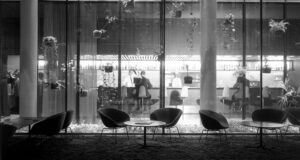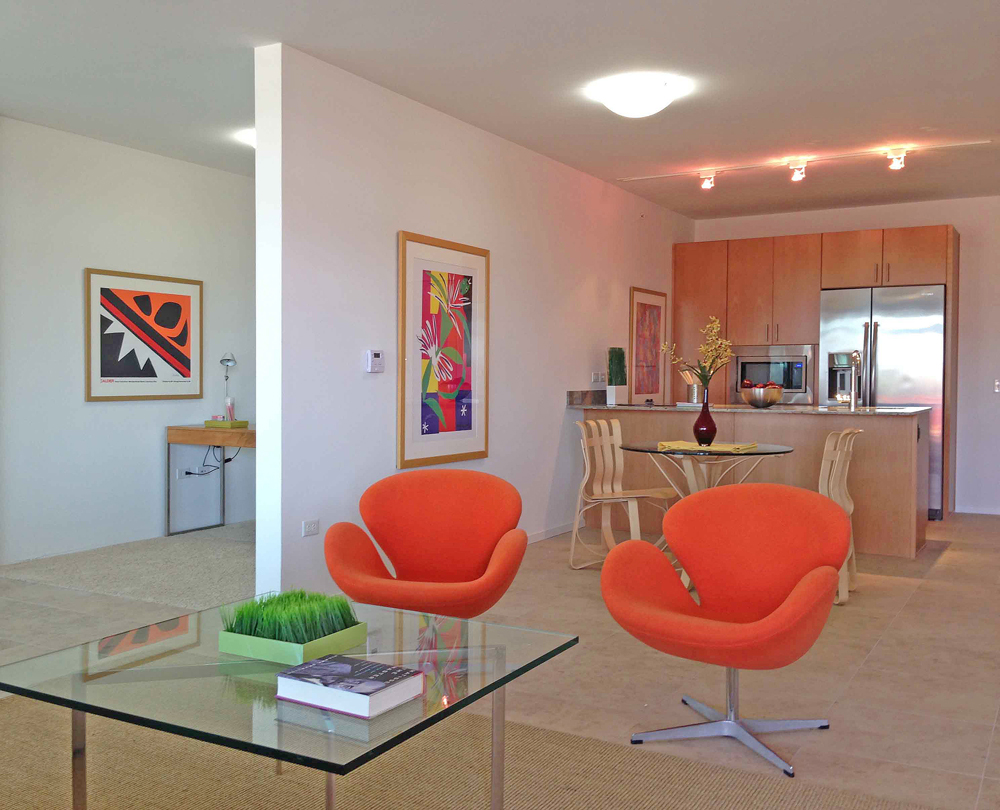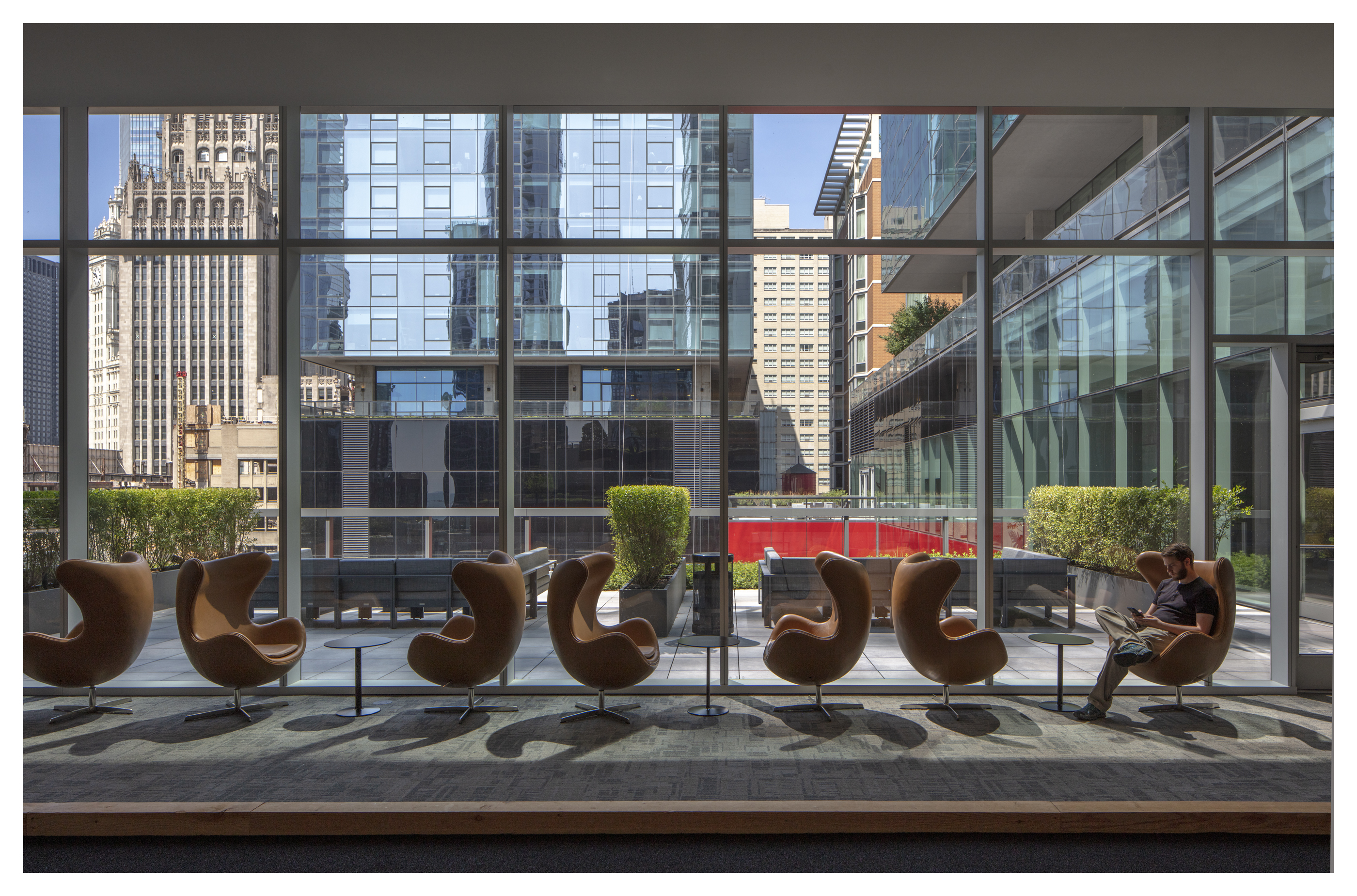With our deep connection to Modernist furniture and designers, it’s no wonder that we continue to gravitate to the classic beauty of Arne Jacobsen’s Pot™ as an essential seating element in the public spaces within Optima communities.
Jacobsen, the prolific Danish designer of the Egg Chair and the Swan Chair, also created the Pot™ in 1959 for the SAS Royal Hotel in Copenhagen. In 2018 the Pot™ was relaunched with a fresh take on Jacobsen’s lounge chair, revitalized for the modern interior; the original design has been preserved, but the seat and materials have been reconsidered to offer fresh options in both fabrics and leathers.
Originally, the Pot™ decorated both the Orchid Bar and Winter Garden in the SAS Royal Hotel, Copenhagen’s first high-rise. Alongside Jacobson’s other furniture designs in the Royal Hotel, including the Swan and Egg chairs, he exclusively utilized the Pot™ to complement the organic aesthetic found in the Orchid Bar and Winter Garden. The chair was also placed on every floor in the hotel across from the elevators to function as a recognizable meeting point.

In its original conception, the Pot™ was a quiet design, meant to mimic a leaf floating in the air. And while the shape has a compact quality, it is both comfortable and spacious.
Be on the lookout for the ways we have incorporated this timeless gem into our lobbies and other social spaces next time you visit an Optima Community!




